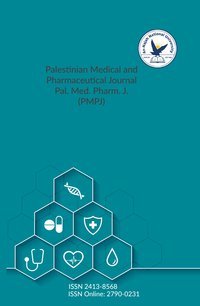Design, Molecular Docking, Molecular Dynamics, and Evaluation of Novel Ligands Targeting Beta-2 Adrenergic Receptor for Asthma Therapeutics
Authors:
Article info
2025-01-12
2025-06-05
2025-08-10
None - None
Keywords
- Molecular docking
- Beta-2 adrenergic receptor (β2AR)
- salbutamol
- and Ligand design
- Molecular Dynamics
Abstract
This study investigates the design and molecular docking of novel ligands targeting the beta-2 adrenergic receptor (β2AR), a critical protein involved in bronchoconstriction and asthma regulation. Utilizing molecular docking simulations, evaluated the binding affinities of proposed compounds, including the eight compounds, and the reference drug salbutamol, against β2AR. The docking studies were conducted using Glide software (Maestro 13.5) within the Schrodinger suite (Schrodinger, 2023), and binding interactions were analyzed to identify key residues responsible for ligand binding and receptor activation The MM-GBSA results indicate that all tested compounds exhibit favorable binding affinities with 7DHI, suggesting strong potential as ligands. Among them, two compounds demonstrated particularly strong binding to the β2-adrenergic receptor (β2AR), with MM-GBSA calculated binding free energies of -57.71 and -58.95 kcal/mol, closely comparable to that of salbutamol (-59.74 kcal/mol). These compounds exhibited the best stability and interaction with β2AR, underscoring their suitability for further development. The binding affinity is primarily driven by Van der Waals interactions and non-polar solvation, highlighting their strong receptor interaction and potential for optimization. Key residues such as SER 207, PHE 289, LYS 305, and ASP 192 played significant roles in stabilizing the receptor-ligand interactions. The inclusion of functional groups like NO₂ and NC was based on their demonstrated favorable interactions with the binding site, which enhanced affinity. While these groups contributed positively to binding, these findings indicate that further structural modifications—beyond these specific functionalities—may optimize β2AR binding even further. These insights into the molecular mechanisms underlying β2AR-ligand interactions highlight the potential of compounds as promising candidates for further development into β2 agonists for asthma treatment. Salbutamol, as a well-established β2 agonist, served as a benchmark for evaluating the efficacy of the novel ligands, confirming the feasibility of designing β2AR-targeting therapeutics with improved potency and selectivity.
Design, Molecular Docking, Molecular Dynamics, and Evaluation of Novel Ligands Targeting Beta-2 Adrenergic Receptor for Asthma Therapeutics
المؤلفون:
معلومات المقال
2025-01-12
2025-06-05
2025-08-10
None - None
الكلمات الإفتتاحية
- Molecular docking
- Beta-2 adrenergic receptor (β2AR)
- salbutamol
- and Ligand design
- Molecular Dynamics
الملخص
This study investigates the design and molecular docking of novel ligands targeting the beta-2 adrenergic receptor (β2AR), a critical protein involved in bronchoconstriction and asthma regulation. Utilizing molecular docking simulations, evaluated the binding affinities of proposed compounds, including the eight compounds, and the reference drug salbutamol, against β2AR. The docking studies were conducted using Glide software (Maestro 13.5) within the Schrodinger suite (Schrodinger, 2023), and binding interactions were analyzed to identify key residues responsible for ligand binding and receptor activation The MM-GBSA results indicate that all tested compounds exhibit favorable binding affinities with 7DHI, suggesting strong potential as ligands. Among them, two compounds demonstrated particularly strong binding to the β2-adrenergic receptor (β2AR), with MM-GBSA calculated binding free energies of -57.71 and -58.95 kcal/mol, closely comparable to that of salbutamol (-59.74 kcal/mol). These compounds exhibited the best stability and interaction with β2AR, underscoring their suitability for further development. The binding affinity is primarily driven by Van der Waals interactions and non-polar solvation, highlighting their strong receptor interaction and potential for optimization. Key residues such as SER 207, PHE 289, LYS 305, and ASP 192 played significant roles in stabilizing the receptor-ligand interactions. The inclusion of functional groups like NO₂ and NC was based on their demonstrated favorable interactions with the binding site, which enhanced affinity. While these groups contributed positively to binding, these findings indicate that further structural modifications—beyond these specific functionalities—may optimize β2AR binding even further. These insights into the molecular mechanisms underlying β2AR-ligand interactions highlight the potential of compounds as promising candidates for further development into β2 agonists for asthma treatment. Salbutamol, as a well-established β2 agonist, served as a benchmark for evaluating the efficacy of the novel ligands, confirming the feasibility of designing β2AR-targeting therapeutics with improved potency and selectivity.
Since 2022
Cite Score (Scopus): 0.8
Time to First Decision: 3 Days
Submission to Acceptance: 45 Days
Acceptance to Publication: 64 Days
Acceptance Rate: 17%
Why should you
Publish With Us?
An-Najah National University
Nablus, Palestine
Nablus, Palestine
- P.O. Box
- 7, 707
- Fax
- (970)(9)2345982
- Tel.
- (970)(9)2345560
- (970)(9)2345113/5/6/7-Ext. 2628
- [email protected]
- EIC
- Prof. Waleed Sweileh
The Palestinian Medical and Pharmaceutical Journal (Pal. Med. Pharm. J.) © 2024 by An-Najah University, Nablus, Palestine is licensed under CC BY-NC 4.0
News and Views
